London's Black Cabs Go Green
by: fast company, 2011-03-30 20:49:25 UTC
A fleet should be ready by the London Olympics in 2012.
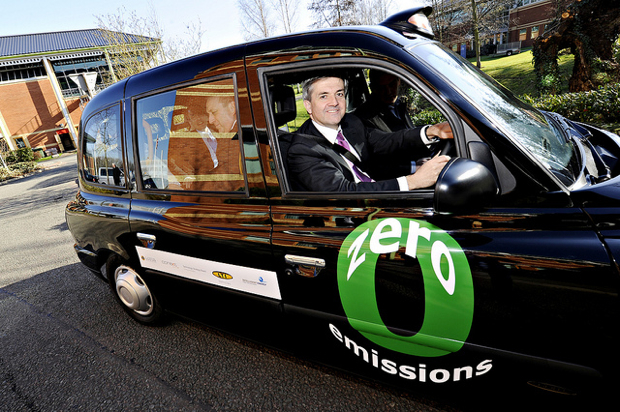
Zero-emission cabs are officially on their way to London. The cabs (which we've written about here before) have been approved for use on the city streets, having driven 8,000 miles on test tracks and on roads, garnering Road Legal status from England's Vehicle Certification Authority. London Mayor Boris Johnson is so pleased that he has advocated accelerated development of the cabs, which were developed by a consortium led by Intelligent Energy.
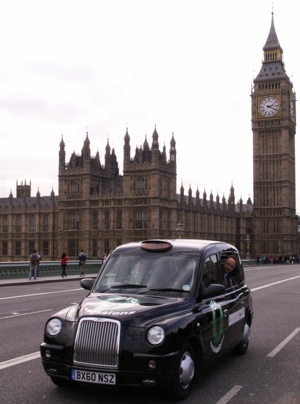 To celebrate its new legal status, one of the cabs went on a jaunt around London last week, passing by many of London's landmarks (like Big Ben, inset). A release informs that the cab "excelled in rush-hour traffic, with smooth and responsive acceleration provided by the fuel cell and electric motors."
To celebrate its new legal status, one of the cabs went on a jaunt around London last week, passing by many of London's landmarks (like Big Ben, inset). A release informs that the cab "excelled in rush-hour traffic, with smooth and responsive acceleration provided by the fuel cell and electric motors."
The new black cabs get a 250-mile driving range and can be refueled in five minutes, crucial for any working cabbie. Said Mayor Johnson, also responsible for a pioneering bike-share program: "These prototype zero-emission taxis are a shining example of British ingenuity, combining revolutionary fuel cell technology with an iconic design classic. This marks an important milestone in my goal to create a cleaner cab fleet, firstly through introduction of the first ever age limits moving towards zero-emission vehicles as they come to market."
Henri Winand, Intelligent Energy's chief, promised Londoners that they'd be "seeing more of them in the coming months." The plan is to have a fleet of 20 on the roads in time for the 2012 Olympics in London. James Kennedy, a spokesman, tells Fast Company that by 2016, "taxis be in wider, regular use around London."
Follow Fast Company on Twitter. Email David Zax, the author of this post.
[Images: Intelligent Energy]


 mathias bengtsson: cellular chair
mathias bengtsson: cellular chair
by: Designboom - Weblog, 2011-03-29 08:00:00 UTC
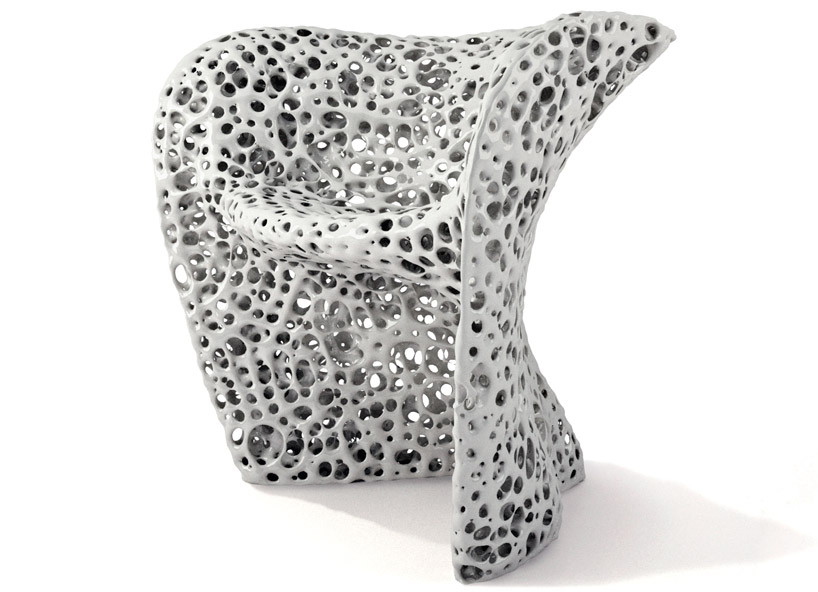
the interior geometry of 'cellular chair' by mathias bengtsson is determined by a medical simulation program that models the regeneration of bone tissue.
read more
How Skis Made From Ground-Up Animal Parts Help You Shred Sustainably
by: fast company, 2011-03-30 22:34:51 UTC
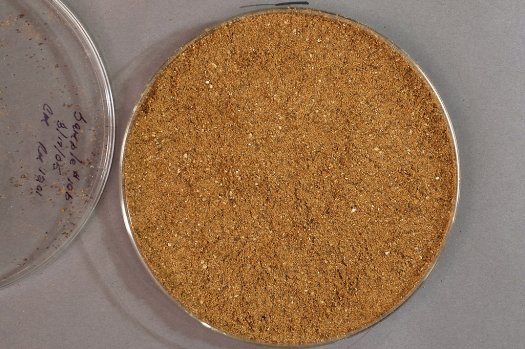
Would you use a pair of skis made out meat and bone meal? What if it meant they were biodegradable and cut down on landfill waste?
Researchers from Clemson University presented research at this year's National Meeting and Exposition of the American Chemical Society (ACS) showing that it's possible to make biodegradable plastic out of meat and bone meal (MBM) byproducts from the livestock business, all without using any raw materials made from oil or natural gas.
For decades, MBM was fed to cattle, sheep, and other farmed animals. But when Mad Cow Disease hit, regulators reacted quickly. So in 1997, the FDA banned MBM as animal feed and banished it to landfills, where over nine billion pounds of the stuff piles up each year in the U.S. Before heading to the landfill, the ground up animal parts have to be treated with harsh chemicals to erase any potential traces of Mad Cow. "The ban changed what once was a valuable resource--a nutritious
component of cattle feed--into a waste disposal headache," said Fehime Vatansever, one of the researchers behind the study, in a statement.
The solution proposed by Vatansever and colleagues is a process that replaces petroleum or natural gas with MBM in the plastic production process. The researchers mixed the animal-part based plastic with ultra-high-molecular weight polyethylene, a tough plastic used in skis, snowboards, joint replacements, and other products and found that the mixed plastic was almost as durable as the old, oil-based plastic alone alone--with the added benefit of being biodegradable.
But while the researchers have discovered a sustainable solution to the MBM problem, moral quandaries may prevent it from ever coming to market. What vegan will be happy with the knowledge that plastic products they use every day might contain little bits of sheep or cattle? MBM is already used in the U.K. as a fossil fuel replacement for energy generation, and it is even used in some cement kilns as a sustainable replacement for coal. But there's something unsettling about having ground-up animal parts used in products that we wear and carry around, especially since they're invisible to the naked eye--unlike fur.
Follow Fast Company on Twitter. Ariel Schwartz can be reached by email.


 How to Save Billions in Building and Bridge Repair: Coat Them In Burnt Coal Ash
How to Save Billions in Building and Bridge Repair: Coat Them In Burnt Coal Ash
by: fast company, 2011-03-30 21:46:36 UTC

A new coating for concrete structures could result in seriously tough structures that better resist damage and thus saves money in reconstruction and repair. Better yet, the coating relies on waste ash from burning coal in power stations.
Research in a joint project between academics at Florida Atlantic University and industry player Blue World Crete has discovered a novel use for the millions of tons of fly ash that's a by-product of the coal-burning power generation industry. The ash by itself, amounting to some 130 million tons per year in the U.S. alone, poses a serious waste-disposal issue--and although a small percentage does get recycled, most of it (around 70%) ends up landfills. Converting it into a coating for concrete that prevents the construction material from crumbling as quickly as it ages would solve many infrastructure problems for the coal industry. And by extending the life span of concrete buildings (the construction of which is an oft-overlooked but serious carbon-polluting process), some of the carbon footprint of both industries could be compensated for.
Details of the coating itself aren't revealed, but it is reported to be half as expensive as existing coating materials used to coat the exterior surface of concrete to protect it from the ravages of wind, temperature changes, and rain, and to cover the structural steel rebar inside reinforced concrete to prevent it from corroding and weakening the surrounding concrete.
It's also useful for covering already damaged concrete. In lab tests, the science team has shown it's strong, durable, and can resist heat, cold, and simulated acid rain tests that were 100,000 times more acidic than usually found in the environment. Its life span in the test was over a year, compared to uncoated concrete subjected to the same conditions, which lasted just a few days.
To read more news like this, follow Fast Company on Twitter: Click here. Or keep up with the author, Kit Eaton's, own tweets.
[Image via Flickr user Surroundsound5000]


 Modular Phone and Dualities
Modular Phone and Dualities
by: Yanko Design, 2011-03-29 15:47:27 UTC
Combination is a mobile phone concept with a steady front-end faceplate and modular components for the backend. The modular parts ensure you have the latest upgraded components. It even comes with a charging dock that doubles up as transmission hub and transforms the mobile phone into a regular home phone! So now you get a two-in-one combo deal!
Designers: Wen-Tsung Lin & Wan-Rurng Hung


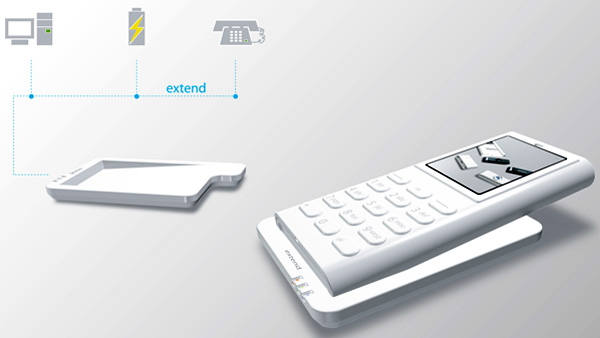
----------
Yanko Design
Timeless Designs - Explore wonderful concepts from around the world!
Yanko Design Store - We are about more than just concepts. See what's hot at the YD Store!
Home Farming Can Look So Trendy!
by: Yanko Design, 2011-03-30 15:51:48 UTC
You can mistake Éva as a modern decorative piece for restaurants, but it’s a trendy, hi-tech composter. It blends in beautifully with any interior and does a magnificent job of recycling wasted organic matter. A part of the waste is used for cultivating and maintaining a green patch and the rest is used to produce methane. I love the way it integrates and becomes a self-contained biosphere!
Designer: François Hurtaud






----------
Yanko Design
Timeless Designs - Explore wonderful concepts from around the world!
Yanko Design Store - We are about more than just concepts. See what's hot at the YD Store!
Easy key system: Distinguish keys without even looking at them
by: The Design blog, 2011-03-30 22:15:22 UTC
Sahilkh18:

Ever felt that you tend to feel lost with a bunch of similar looking keys? If two keys are of the same brand or color then picking the correct one becomes a task in itself.
Vera Kunhartova, to kill all such confusions, has designed the Easy Key System which differentiates keys with the help of Braille. These keys come in a 100% biodegradable compressed case which is very easy to carry around.
One can easily swap keys with an uncomplicated and insightful system. This can prove to be beneficial for people who are visually impaired as locating the correct key is always a trouble for them. Also, when someone enters a dark zone picking the right key will be much easier.
So, either place it around your neck or wrap it on your wrist, Easy key system will make picking keys less confusing.
Via: Coroflot


 Double Side by Matali Crasset for Danese
Double Side by Matali Crasset for Danese
by: Dezeen, 2011-03-30 13:49:50 UTC
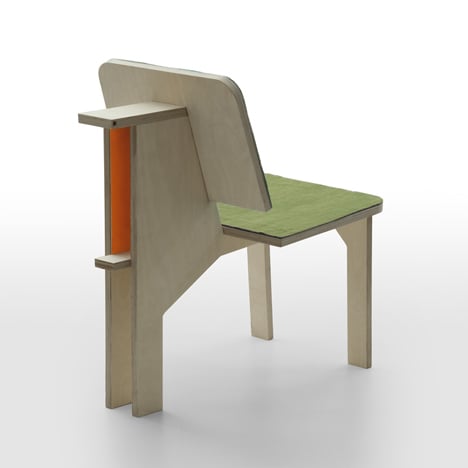
French designer Matali Crasset will present this chair with a fold-out table for Italian brand Danese in Milan next month. (more…)


 Behind the Scenes, as the Famed Eames Lounger Is Made [Video]
Behind the Scenes, as the Famed Eames Lounger Is Made [Video]
by: TreeHugger Design, 2011-03-29 14:36:19 UTC
 From our friends at Fast Company, "bridging the fuzzy border between design and business."
From our friends at Fast Company, "bridging the fuzzy border between design and business."
Introduced more than 50 years ago, the Lounge Chair & Ottoman is today the world's most beloved Eames design -- a fixture in every corner office and psychiatrist's flat, from New York to
Seattle. It's also probably the easiest to knock off.
So to boldface-italicize the value of the real thing, Vitra -- one of two companies officially licensed to produce the Eames Lounge Chair & Ottoman -... Read the full story on TreeHugger
Dime-Sized Cancer Detector Also Recognizes HIV
by: Inhabitat , 2011-03-29 14:15:52 UTC

Working on top of technology that was developed four years ago at the Harvard-MIT Division of Health Sciences and Technology, researchers have developed a dime-sized instrument that is able to detect cancer and HIV in patients. The tiny device is capable of quickly detecting cancer cells that may have spread to other parts of a patient’s body using a 1-milliliter sample of blood. Researchers believe this device could be developed to help doctors inexpensively biopsy patients in developing countries where more costly diagnostic equipment is not available.



Read the rest of Dime-Sized Cancer Detector Also Recognizes HIVhttp://www.inhabitat.com/wp-admin/ohttp://www.inhabitat.com/wp-admin/options-general.php?page=better_feedptions-general.php?page=better_feed
Permalink |
Add to
del.icio.us |
digg
Post tags: cancer advancements, cancer detection, cancer detection technology, cancer research developments, cancer technology, cancer treatment technology, new cancer detection technology

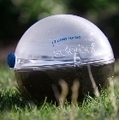



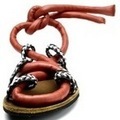




Comments by our Users
Be the first to write a comment for this item.